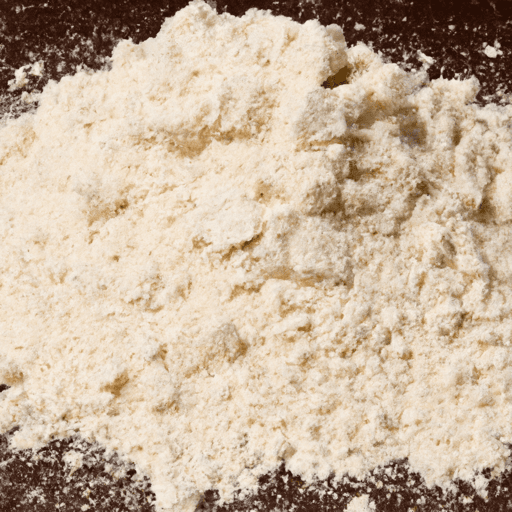Better for Bread Flour: The Key Ingredient for Perfectly Delicious and Fluffy Bread
When it comes to baking bread, one essential ingredient can make all the difference: Better for Bread flour. This versatile flour is specially designed for bread making, ensuring superior taste, texture, and rise. In this blog post, we will explore the cooking-related aspects of Better for Bread flour, including its taste, common uses, nutritional value, and some interesting history and facts. So, let’s dive right in and discover the secrets behind this fantastic flour!
Taste and Texture
Better for Bread flour boasts a distinct flavor that adds depth and richness to every loaf. It has a slightly nutty undertone, which contributes to the overall delightful taste experience. When baked, bread made with this exceptional flour develops a crisp, golden crust with a soft, pillowy interior. It creates a wonderful balance between lightness and chewiness, making every bite a pure delight.
Common Uses
Due to its high protein content, Better for Bread flour is ideal for baking bread. The gluten formed from the proteins in this flour gives the dough its structure, resulting in better volume and a finer crumb texture. Whether you’re making classic sandwich loaves, baguettes, pizza dough, or artisanal bread, Better for Bread flour is the perfect companion for achieving professional-grade results. It can be used in both hand-kneaded and machine-made bread recipes, providing consistent quality and exceptional taste.
Nutritional Value
In addition to its culinary benefits, Better for Bread flour also offers several nutritional advantages. This flour is a great source of dietary fiber, providing an essential component for a healthy digestive system. Furthermore, it contains essential minerals, such as iron and magnesium, which are crucial for maintaining overall well-being. Incorporating Better for Bread flour into your diet is a fantastic way to enjoy delightful bread while ensuring a wholesome and nutritious meal.
History and Interesting Facts
Better for Bread flour is the result of decades of innovation and expertise in the world of baking. It was specifically formulated to meet the demands of professional bakers and baking enthusiasts alike. The development of this flour involved the careful selection of high-quality wheat varieties with exceptional protein content, ensuring optimal gluten formation and bread structure. By using Better for Bread flour, you are tapping into a lineage of baking tradition and excellence.
Interestingly, bread made with Better for Bread flour has been a staple in many cultures for centuries. From hearty European recipes to delicate Asian steamed buns, this flour has played a significant role in shaping the world’s diverse bread traditions. Embracing this flour not only allows you to create extraordinary bread but also connects you to a global culinary heritage.
In conclusion, Better for Bread flour is the go-to choice for baking bread that is both flavorful and full of texture. Its unique taste, versatility, and nutritional benefits make it an essential ingredient in any bread lover’s kitchen. Whether you’re an experienced baker or a novice bread enthusiast, experimenting with Better for Bread flour will elevate your creations to a whole new level. So grab a bag of this amazing flour and start kneading your way to the most delicious homemade bread you’ve ever tasted!
Better for Bread flour is a type of flour that is specifically formulated for making bread. Here are some interesting facts about this flour:
Origin: Better for Bread flour is not a specific type of flour with a unique origin. Rather, it refers to a commercial brand or variety of flour that has been specially developed for breadmaking purposes. The exact origin and brand history may vary depending on the specific product.
Common Uses: Better for Bread flour is primarily used for making bread, including yeast breads, rolls, bagels, and other similar baked goods. Due to its higher protein content, it provides better structural support and helps to create a lighter, well-risen loaf with a good texture.
Nutritional Benefits: Better for Bread flour generally contains more protein than all-purpose flour, which is beneficial for making bread. Protein content in bread flour helps to create gluten, a protein network responsible for the structure and strength in bread dough. Additionally, bread flour often contains essential nutrients such as iron and B vitamins.
Unique Properties: Better for Bread flour typically has a higher protein content (around 12-14%) compared to all-purpose flour (around 10-12%). This higher protein content contributes to the development of gluten, resulting in a chewier and more elastic texture in bread. The added strength from the gluten network allows the dough to trap gas produced by yeast more effectively, leading to a better rise and larger, airier crumb.
Historical Significance: The use of specialized flours for baking bread has a long history. In ancient times, different types of grains and flours were used for specific breadmaking purposes. Bread flours have evolved and been refined over time to improve the texture, structure, and rise of bread products. While the exact history and development of Better for Bread flour as a brand may not be well-documented, the concept of using high-protein flours for breadmaking has been practiced for centuries.




Use the share button below if you liked it.
It makes me smile, when I see it.